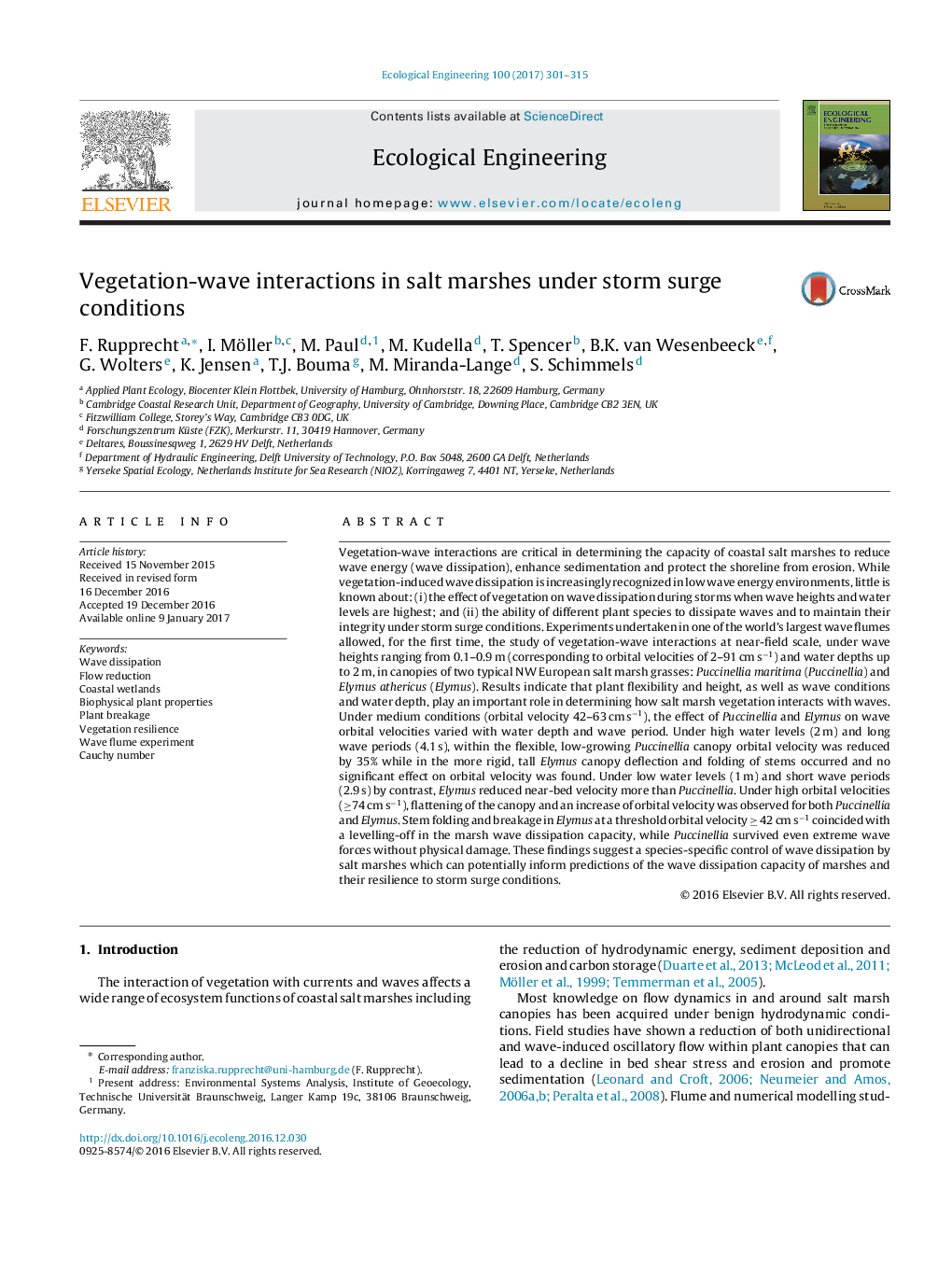| Article ID | Journal | Published Year | Pages | File Type |
|---|---|---|---|---|
| 5743733 | Ecological Engineering | 2017 | 15 Pages |
â¢Salt marsh vegetation can reduce near-bed orbital velocities during storm surges.â¢Vegetation effect on orbital velocities varies with biophysical properties.â¢Flexible low-growing plant canopies show high resilience to storm surge conditions.â¢More rigid and tall plant canopies experience stem folding and breakage.â¢The contribution of vegetation to wave dissipation is plant species specific
Vegetation-wave interactions are critical in determining the capacity of coastal salt marshes to reduce wave energy (wave dissipation), enhance sedimentation and protect the shoreline from erosion. While vegetation-induced wave dissipation is increasingly recognized in low wave energy environments, little is known about: (i) the effect of vegetation on wave dissipation during storms when wave heights and water levels are highest; and (ii) the ability of different plant species to dissipate waves and to maintain their integrity under storm surge conditions. Experiments undertaken in one of the world's largest wave flumes allowed, for the first time, the study of vegetation-wave interactions at near-field scale, under wave heights ranging from 0.1-0.9 m (corresponding to orbital velocities of 2-91 cm sâ1) and water depths up to 2 m, in canopies of two typical NW European salt marsh grasses: Puccinellia maritima (Puccinellia) and Elymus athericus (Elymus). Results indicate that plant flexibility and height, as well as wave conditions and water depth, play an important role in determining how salt marsh vegetation interacts with waves. Under medium conditions (orbital velocity 42-63 cm sâ1), the effect of Puccinellia and Elymus on wave orbital velocities varied with water depth and wave period. Under high water levels (2 m) and long wave periods (4.1 s), within the flexible, low-growing Puccinellia canopy orbital velocity was reduced by 35% while in the more rigid, tall Elymus canopy deflection and folding of stems occurred and no significant effect on orbital velocity was found. Under low water levels (1 m) and short wave periods (2.9 s) by contrast, Elymus reduced near-bed velocity more than Puccinellia. Under high orbital velocities (â¥74 cm sâ1), flattening of the canopy and an increase of orbital velocity was observed for both Puccinellia and Elymus. Stem folding and breakage in Elymus at a threshold orbital velocity â¥Â 42 cm sâ1 coincided with a levelling-off in the marsh wave dissipation capacity, while Puccinellia survived even extreme wave forces without physical damage. These findings suggest a species-specific control of wave dissipation by salt marshes which can potentially inform predictions of the wave dissipation capacity of marshes and their resilience to storm surge conditions.
